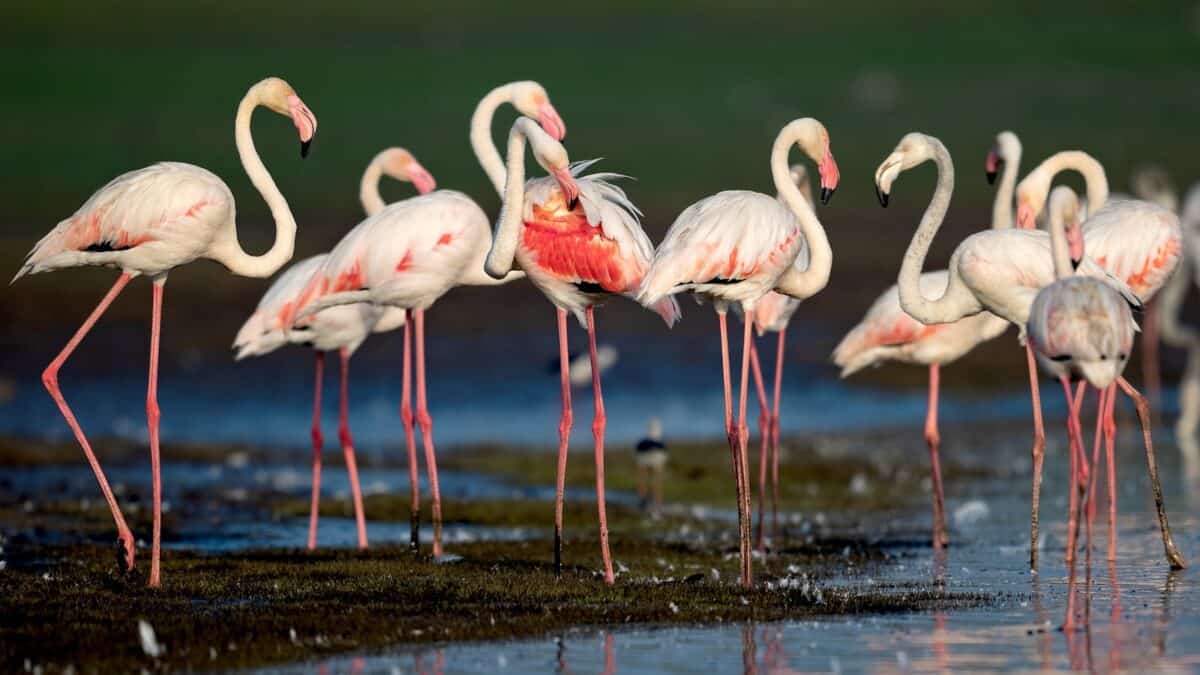Few birds capture the imagination quite like flamingos. With their vibrant pink plumage, distinctive curved bills, and elegant posture, these remarkable wading birds have become iconic symbols of tropical paradises and wild wetlands alike. While many people have only seen flamingos in zoos or wildlife parks, observing these magnificent creatures in their natural habitats offers an entirely different and unforgettable experience. From the salt flats of South America to the alkaline lakes of Africa, flamingos thrive in some of Earth’s most breathtaking landscapes. This article explores the most stunning destinations where nature enthusiasts can witness flamingos in their wild splendor, highlighting what makes each location special and the best times to visit for optimal viewing opportunities.
Lake Nakuru, Kenya: Africa’s Pink Paradise
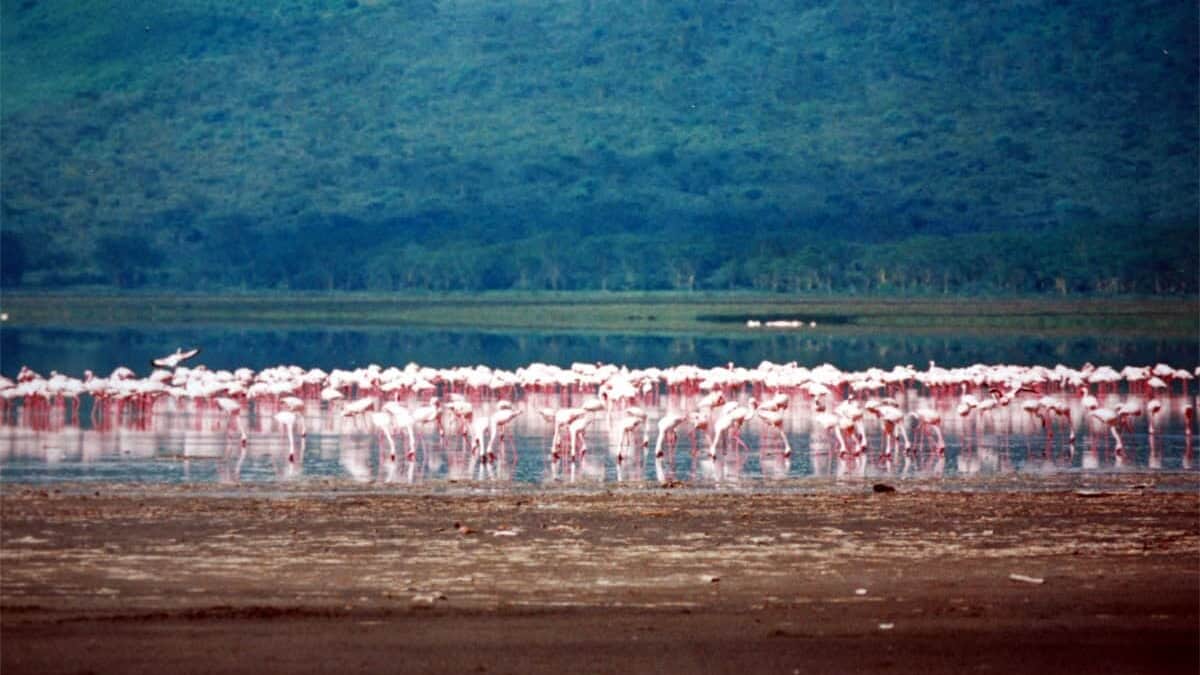
Lake Nakuru National Park in Kenya’s Rift Valley has long been celebrated as one of the world’s premier flamingo-watching destinations. The alkaline lake can host up to two million lesser flamingos during peak seasons, creating a mesmerizing pink carpet across the water’s surface. The sight of these birds against the backdrop of acacia forests and the dramatic Great Rift Valley escarpment makes for truly spectacular viewing. Though flamingo numbers have fluctuated in recent years due to changing water levels and conditions, Lake Nakuru remains an iconic destination for flamingo enthusiasts. The best viewing times are typically during the dry seasons from January to March and July to October. Beyond flamingos, the park is home to rhinos, lions, giraffes, and over 450 bird species, making it a comprehensive wildlife experience.
Laguna Colorada, Bolivia: The Red Lagoon

In the remote southwestern corner of Bolivia lies Laguna Colorada, a shallow salt lake whose waters glow with an otherworldly red hue due to algae and mineral pigments. Against this dramatic crimson backdrop, thousands of rare James’s (or puna) flamingos create a surreal natural spectacle. These flamingos, among the rarest in the world, are joined by Chilean and Andean flamingos, making Laguna Colorada one of the few places where three flamingo species can be observed together. Situated at an elevation of 14,000 feet (4,278 meters) within Eduardo Avaroa Andean Fauna National Reserve, the lake offers visitors a breathtaking panorama of flamingos feeding in blood-red waters surrounded by snow-capped volcanoes and barren desert landscapes. The best visiting time is during the dry season from April to November, though temperatures can drop dramatically at night in this high-altitude environment.
Camargue, France: Europe’s Flamingo Haven
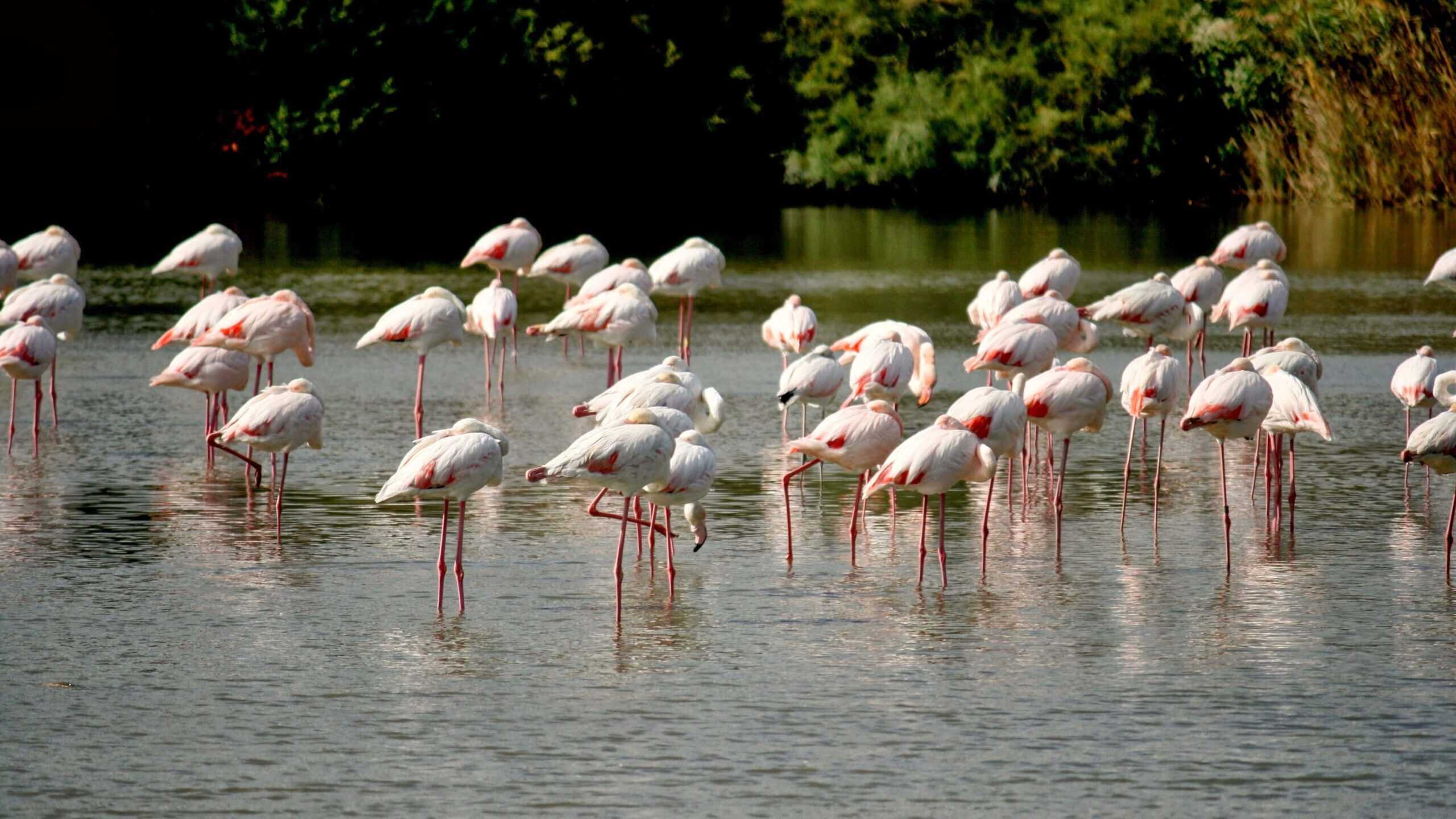
The Camargue, a vast river delta in southern France where the Rhône meets the Mediterranean Sea, hosts Europe’s largest flamingo population. Approximately 10,000-15,000 greater flamingos make their home in this unique ecosystem of marshes, salt pans, and lagoons. The Parc Ornithologique du Pont de Gau offers excellent opportunities for close observation of these birds without disturbing them. What makes the Camargue particularly special is the juxtaposition of wild flamingos against traditional French landscapes complete with white Camargue horses and black bulls. The region’s flamingo population is present year-round, though numbers increase during breeding season from April to September. The accessibility of the Camargue—just a short drive from cities like Arles and Montpellier—makes it one of the most convenient places in the world to observe wild flamingos in a stunning natural setting.
Lake Bogoria, Kenya: The Geothermal Wonderland
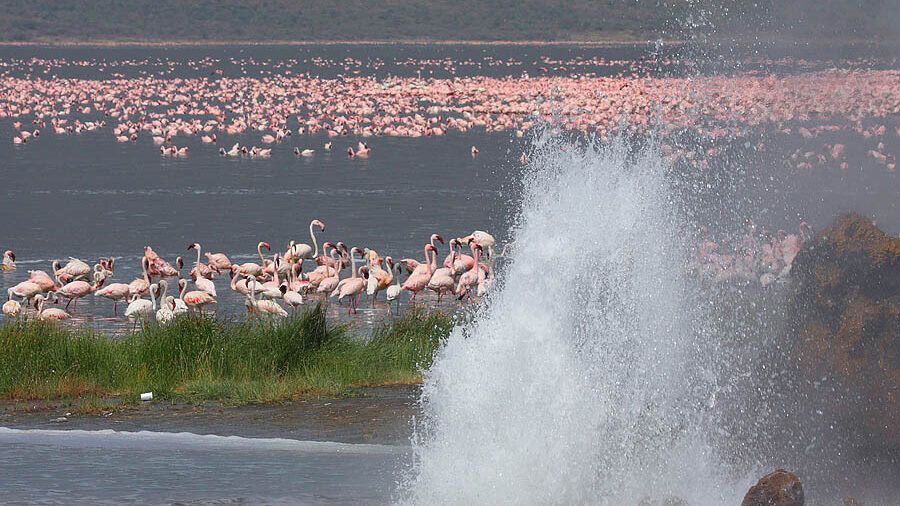
Lake Bogoria in Kenya offers one of the most dramatic settings for flamingo observation anywhere on Earth. This alkaline lake is renowned not only for its massive flamingo concentrations but also for its spectacular hot springs and geysers that shoot boiling water up to 5 meters into the air. When conditions are right, over a million lesser flamingos gather here, creating one of Africa’s most impressive natural spectacles. What makes Bogoria particularly special is the sight of pink flamingos feeding against the backdrop of steam rising from geothermal vents—a photographer’s dream scenario. The best viewing periods typically coincide with dry seasons, particularly from January to March. The lake’s protected status as a National Reserve ensures minimal disturbance to the birds. Unlike some other flamingo habitats, Lake Bogoria’s waters remain consistently alkaline, providing reliable feeding grounds even when other lakes in the Rift Valley system become less hospitable.
Celestun Biosphere Reserve, Mexico: Mangroves and Flamingos
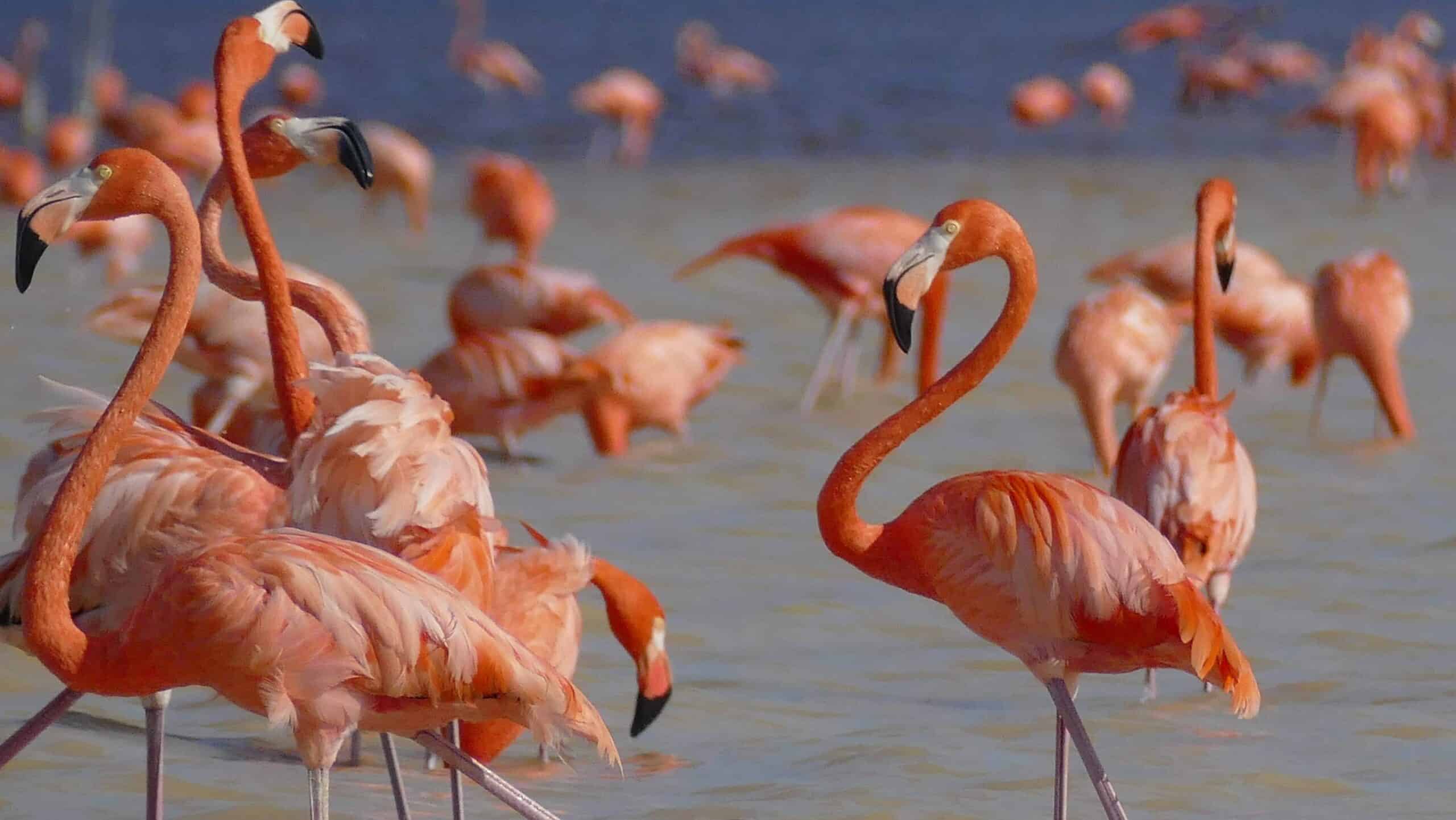
The Celestun Biosphere Reserve on Mexico’s Yucatan Peninsula offers visitors a unique opportunity to observe American flamingos in a stunning coastal setting where mangrove forests meet the Gulf of Mexico. Between November and April, up to 35,000 flamingos gather in the reserve’s shallow waters to feed and breed. What makes this location particularly special is the experience of approaching the flamingos by boat, gliding through narrow mangrove channels before emerging into open waters where thousands of flamingos create a sea of pink against the tropical blue sky. Beyond the flamingos, Celestun boasts incredible biodiversity with more than 300 bird species inhabiting its diverse ecosystems. The reserve’s proximity to popular tourist destinations like Merida (about 90 minutes away) makes it an accessible yet authentic wildlife experience that combines flamingo viewing with exploration of pristine mangrove forests.
Laguna de Pozuelos, Argentina: High Altitude Splendor
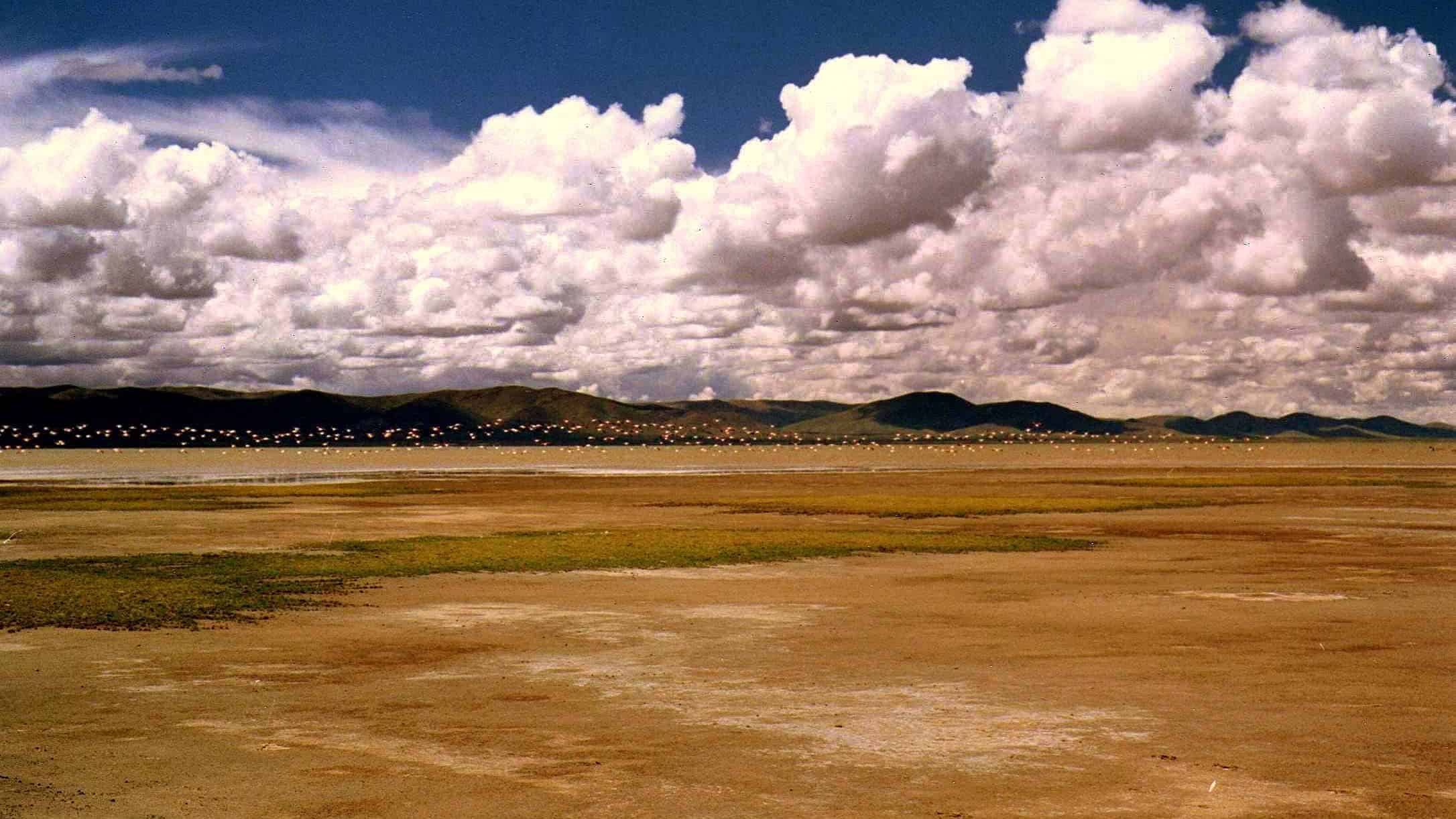
Nestled in the high plateaus of northwestern Argentina, Laguna de Pozuelos is a remote biosphere reserve and Ramsar wetland site that hosts significant populations of all three South American flamingo species: Chilean, Andean, and James’s flamingos. What makes this location extraordinary is its setting amid the stark beauty of the Altiplano at an elevation of approximately 11,000 feet (3,500 meters). The expansive salt lake creates a mirror-like surface that reflects the surrounding mountains and the flamingos themselves, producing ethereal photographic opportunities. The best time to visit is during the southern summer (December to March) when flamingo numbers peak and the harsh winter conditions of the high Andes have subsided. The journey to reach this remote location requires effort, but those who make the trip are rewarded with the sight of flamingos in one of South America’s most pristine and least-visited natural settings.
Lake Natron, Tanzania: The Flamingo’s Birthplace

Lake Natron in northern Tanzania presents perhaps the most otherworldly setting for flamingo observation on the planet. This hyper-alkaline lake, with waters that can reach pH levels of up to 10.5, appears blood-red or deep orange due to microorganisms that thrive in its caustic environment. Despite—or perhaps because of—these extreme conditions, Lake Natron serves as East Africa’s most important breeding site for lesser flamingos. Up to 2.5 million flamingos gather here to nest on the safe, predator-free salt islands that form in the middle of the lake. The sight of hundreds of thousands of flamingos against the backdrop of the active volcano Ol Doinyo Lengai (the “Mountain of God” in Maasai language) creates an apocalyptic yet beautiful landscape that feels more alien than earthly. The best viewing time coincides with the breeding season from September to April. The lake’s remote location and challenging access ensure it remains relatively untouched by mass tourism, preserving the authentic wildness of the experience.
Walvis Bay Lagoon, Namibia: Desert Meets Ocean
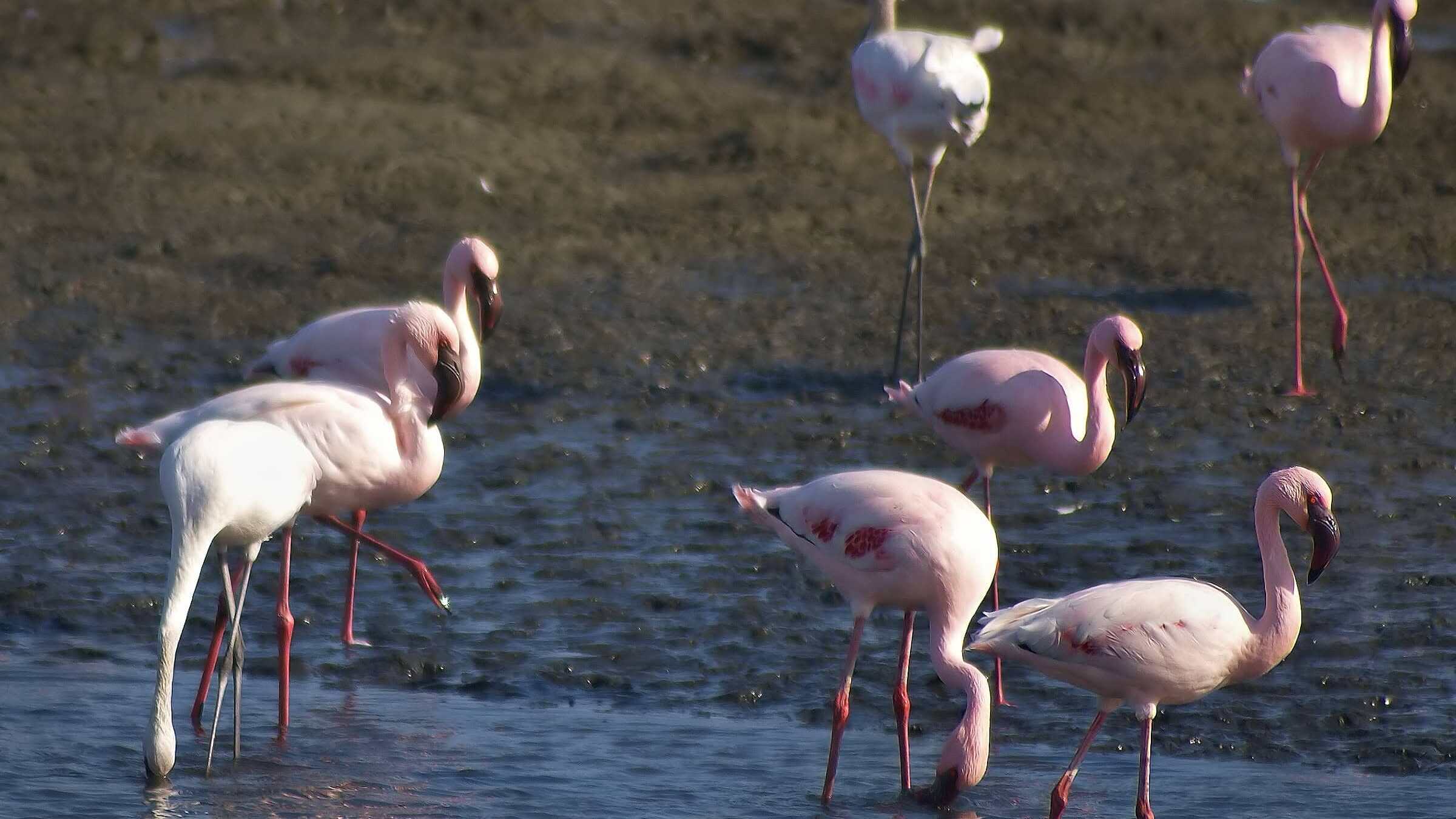
The Walvis Bay Lagoon in Namibia offers one of Africa’s most accessible and reliable flamingo viewing experiences. This coastal wetland, situated where the Namib Desert meets the Atlantic Ocean, hosts tens of thousands of both greater and lesser flamingos throughout the year. What makes this location unique is the stark contrast between the flamingos’ vivid pink coloration and the surrounding desert landscapes, creating a visual feast for photographers and nature lovers alike. The lagoon’s protected status as a Ramsar wetland site ensures the birds can feed undisturbed in its shallow, nutrient-rich waters. Visitors can observe the flamingos from convenient viewing points along the waterfront of Walvis Bay town, making this one of the few places where you can enjoy a cup of coffee at a seaside café while watching thousands of wild flamingos just meters away. The site is accessible year-round, though the greatest concentrations occur between November and April when migratory birds join the resident population.
Isabela Island, Galapagos: Darwin’s Flamingos
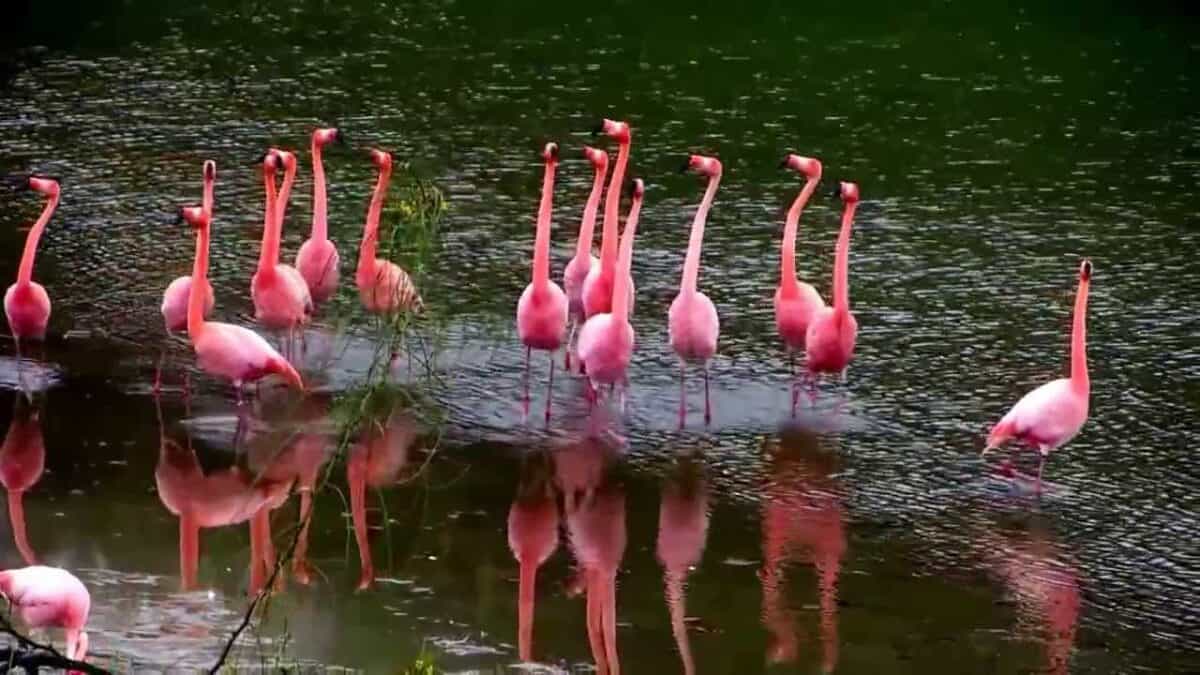
The Galapagos Islands offer a unique opportunity to observe American flamingos in one of the world’s most famous and well-preserved natural laboratories. On Isabela Island, the largest in the archipelago, small populations of these stunning birds inhabit saltwater lagoons near the shoreline. What makes flamingo viewing in the Galapagos special is the intimate nature of the experience—while numbers are smaller than at some mainland sites (typically 300-500 birds), the protected nature of the islands means the flamingos are remarkably approachable. Visitors can often observe feeding and courtship behaviors from close range without disturbing the birds. The contrast of pink flamingos against black volcanic landscapes creates striking visuals unique to this location. Additionally, these are the westernmost flamingos in the Americas, having adapted to the isolated conditions of the Galapagos. The birds can be observed year-round, though the best viewing is during the wet season from December to May when the lagoons contain more water.
Salar de Atacama, Chile: The World’s Driest Desert
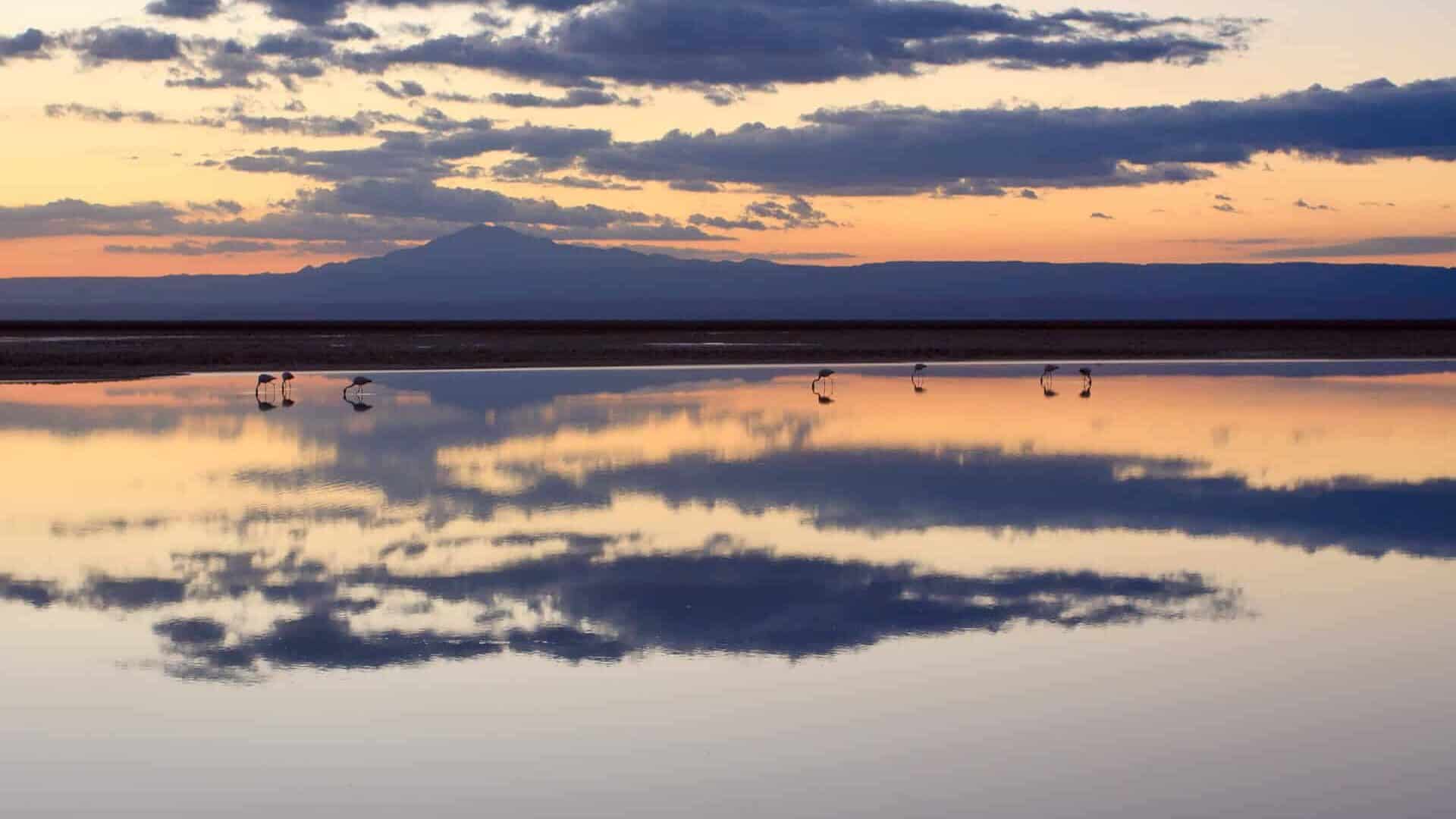
In the heart of the Atacama Desert—the driest non-polar desert on Earth—lies the Salar de Atacama, Chile’s largest salt flat. Within this stark landscape, the Chaxa Lagoon section of Los Flamencos National Reserve provides habitat for three species of flamingos: Andean, Chilean, and James’s. What makes this location extraordinary is the surreal backdrop of salt crystals, distant volcanoes, and the absolute clarity of the desert air, which creates perfect conditions for photography. The sight of flamingos feeding in shallow pools surrounded by salt formations, with the perfect cone of the Licancabur volcano in the background, ranks among South America’s most iconic natural images. While flamingo numbers rarely reach the massive concentrations seen at some African lakes, the exceptional visibility and otherworldly landscape more than compensate. The reserve is accessible year-round, though the most comfortable visiting conditions occur during the southern hemisphere’s spring and fall (September-November and March-May).
Inagua National Park, Bahamas: Caribbean Flamingo Capital
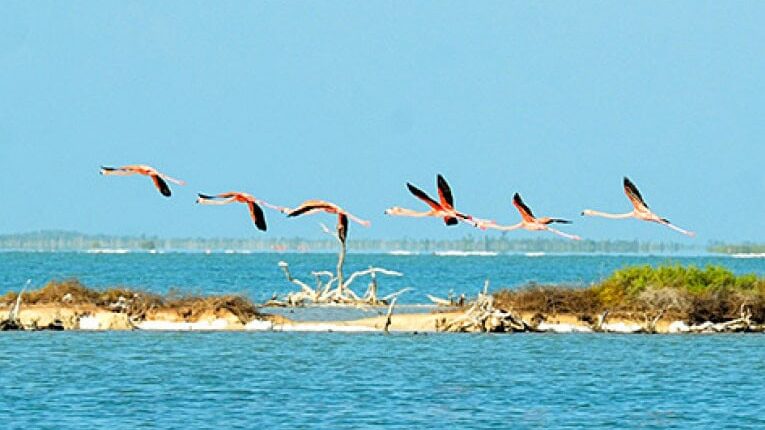
The Inagua National Park on Great Inagua Island in the Bahamas hosts the largest breeding colony of American flamingos in the Caribbean. After near extinction in the 1950s due to hunting, conservation efforts have restored the population to over 60,000 birds, making this one of the greatest conservation success stories for flamingos worldwide. What makes Inagua special is the opportunity to observe these birds in massive numbers across the shallow inland lake of Lake Rosa (Lake Windsor), where they perform synchronized courtship dances during breeding season. The contrast of thousands of flamingos against the tropical Caribbean setting, surrounded by cacti and palm trees rather than the desert or alpine environments where flamingos are typically found, creates a unique viewing experience. The best time to visit is during the breeding season from March to July when the birds’ colors are most vibrant and courtship behaviors most active. The remote nature of Great Inagua—the southernmost island in the Bahamas—ensures that those who make the journey are rewarded with an authentic wilderness experience.
Fuente de Piedra, Spain: Mediterranean Magnificence
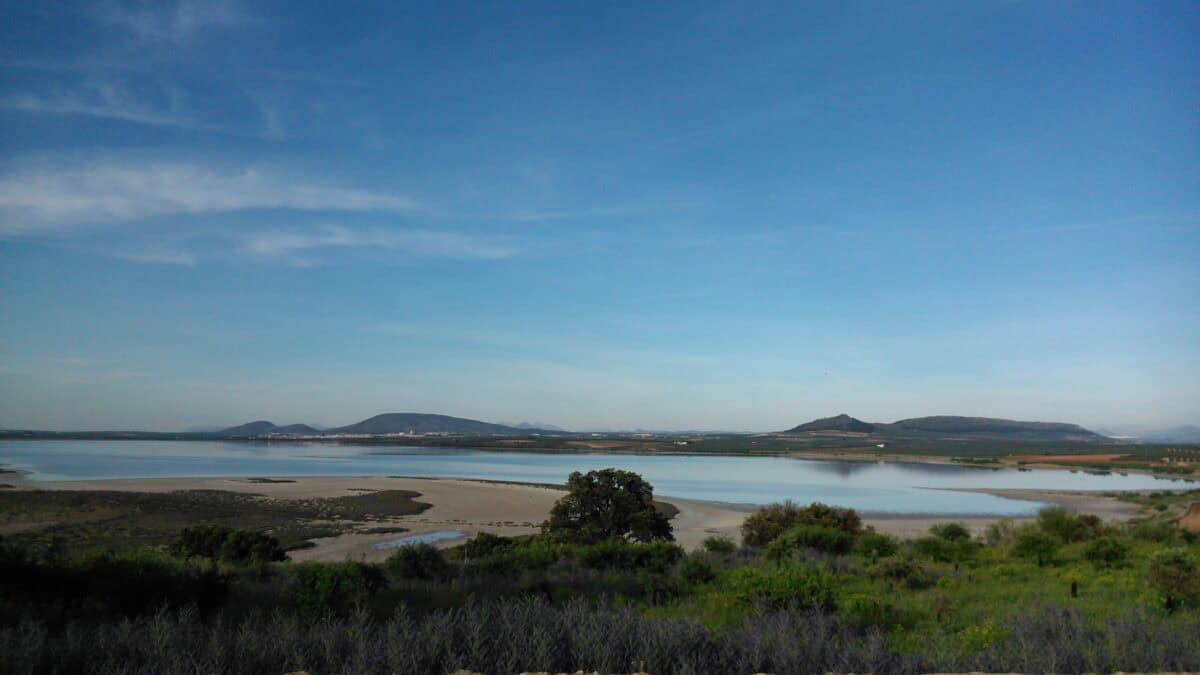
Laguna de Fuente de Piedra in southern Spain’s Andalusia region hosts Europe’s second-largest flamingo colony after the Camargue. This shallow, saline lake becomes home to up to 20,000 breeding pairs of greater flamingos each spring, creating the largest flamingo nursery on the Iberian Peninsula. What makes this location remarkable is the accessibility of the spectacle—well-designed observation points allow visitors to witness the entire flamingo life cycle, from courtship displays to nest-building and chick-rearing, without disturbing the birds. The information center provides excellent educational resources about flamingo biology and conservation. The best viewing period runs from February to August, with breeding activities peaking in April and May. During successful breeding years, the “flamingo kindergartens” where thousands of gray flamingo chicks gather under the supervision of a few adults create an especially memorable sight. The lake’s protected status as a nature reserve since 1984 has been crucial in maintaining this thriving flamingo population just a short drive from major tourist destinations like Málaga and Seville.
The magnificent flamingo colonies described in this article represent not only some of Earth’s most spectacular wildlife viewing opportunities but also fragile ecosystems facing numerous challenges. Climate change, water diversion projects, industrial development, and human encroachment threaten many of these sites, making conservation efforts increasingly urgent. Responsible tourism can play a vital role in protecting these habitats by raising awareness and providing economic incentives for preservation. When planning a visit to any of these stunning locations, travelers should choose operators with strong environmental ethics, maintain appropriate distances from the birds, and support local conservation initiatives. The future of wild flamingos depends on maintaining the delicate balance of the specialized environments they require—from mineral-rich alkaline lakes to pristine coastal wetlands. By experiencing these pink planet wonders firsthand, we gain not only unforgettable memories but also a deeper appreciation for the importance of preserving Earth’s remarkable biodiversity.
- The Best US National Parks for Spring Wildlife Watching - August 24, 2025
- Why Bears Play—and What It Teaches Us - August 24, 2025
- 12 Dog Breeds That Can Survive a Coyote Attack - August 24, 2025

